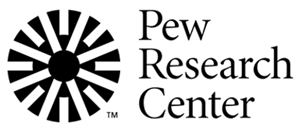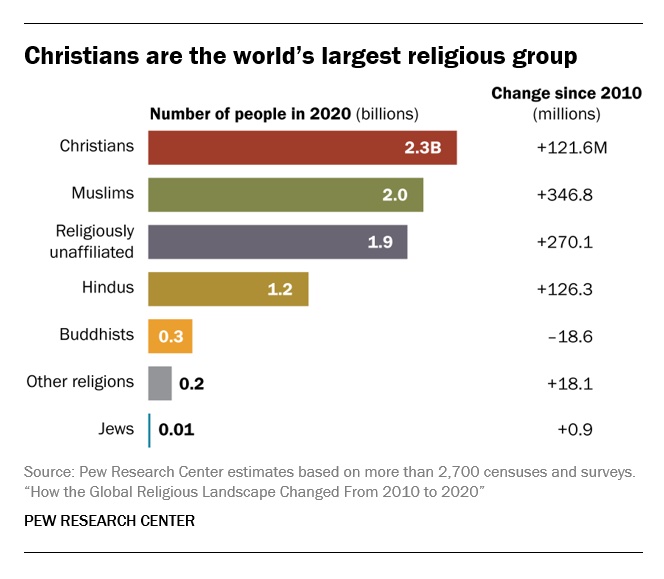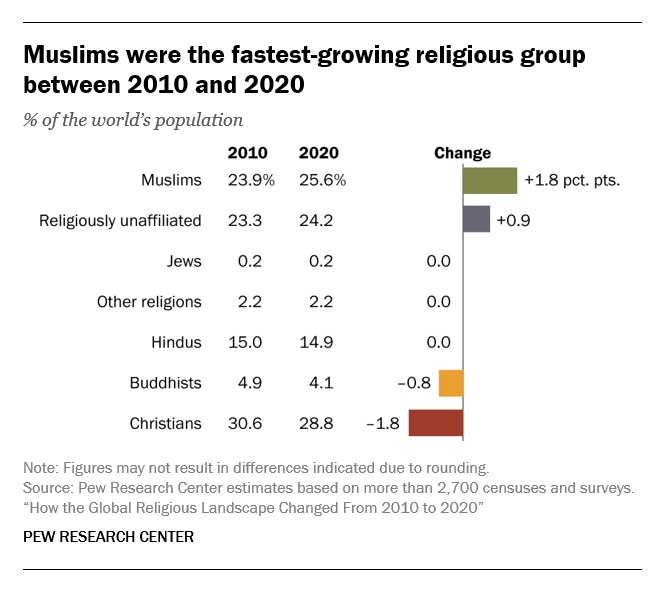Uncategorized
U.N. exhibit remembers when the world turned its back on stateless Jewish refugees
(New York Jewish Week) — In 2017, Deborah Veach went back to Germany, looking for the site of the displaced persons camp where she and her parents had been housed after World War II. They were in suspension, between the lives her parents led in Belarus before they were shattered by the Nazis, and the unknown fate awaiting them as refugees without a country.
To her dismay, and despite the fact that Foehrenwald was one of the largest Jewish DP centers in the American-controlled zone of Germany, she found barely a trace. A complex that once included a yeshiva, a police force, a fire brigade, a youth home, a theater, a post office and a hospital was remembered by almost no one except a local woman who ran a museum in a former bath house.
“It was sort of an accident of history that we were there in that particular camp in Germany, of all places, with no ties, no extended family, no place to call home,” said Veach, who was born at Foehrenwald in 1949 and lives in New Jersey. Now, “they renamed it. They changed the names of all the streets. There is nothing recognizable about the fact that it had been a DP camp.”
Veach is part of a now-aging cohort of children born or raised in the DP camps, the last with a first-hand connection to the experience of some 250,000 Jewish survivors who passed through them at the end of the war. To make sure memories of the camps survive them, the YIVO Institute for Jewish Research and the United Nations Department of Global Communications have staged a short-term exhibit, “After the End of the World: Displaced Persons and Displaced Persons Camps.”
On display at U.N. headquarters in New York City Jan. 10 through Feb. 23, it is intended to illuminate “how the impact of the Holocaust continued to be felt after the Second World War ended and the courage and resilience of those that survived in their efforts to rebuild their lives despite having lost everything,” according to a press release.
Residents of a displaced persons camp in Salzburg, Austria. Undated, post-Second World War. (YIVO Institute for Jewish Research)
Among the artifacts on display are dolls created by Jewish children and copies of some of the 70-odd newspapers published by residents, as well as photographs of weddings, theatrical performances, sporting events and classroom lessons.
The exhibit is “about the displaced persons themselves, about their lives and their hopes and their dreams, their ambitions, their initiatives,” said Debórah Dwork, who directs the Center for the Study of the Holocaust, Genocide, and Crimes Against Humanity at the Graduate Center-CUNY, who served as the scholar adviser for the exhibition.
“There’s no point where the residents of these DP camps were just sitting around waiting for other people to do things for them,” she told the New York Jewish Week. “They took initiative and developed a whole range of cultural and educational programs.”
As early as 1943, as the war displaced millions of people, dozens of nations came to Washington and signed onto the United Nations Relief and Rehabilitation Authority. (Despite its name, it preceded the founding of the U.N.) After the war, the British and U.S. military were in charge of supplying food, protection and medical care in hundreds of camps throughout Germany and Austria, and UNRRA administered the camps on a day-to-day basis.
Early on, Jewish Holocaust survivors — some who suffered in concentration camps, others who had escaped into the Soviet Union — were put in DP camps alongside their former tormentors, until the U.S. agreed to place them in separate compounds. Unable or unwilling to return to the countries where they had lost relatives, property and any semblance of a normal life, they began a waiting game, as few countries, including the United States, were willing to take them in, and Palestine was being blockaded by the British.
Abiding antisemitism was not the only reason they remained stateless. “Jews were [accused of being] subversives, communists, rebels, troublemakers, and the world war quickly gave way to cold war, and with it the notion that Hitler had been defeated and what we have to worry about is the communists,” David Nasaw, author of “The Last Million,” a history of the displaced persons, told the New York Jewish week in 2020.
In 1948 and 1950, Congress grudgingly passed legislation that allowed 50,000 Jewish survivors and their children to come to the United States. The rest were eventually able to go to Israel, after its independence in 1948.
The U.N. exhibit focuses less on this macro history — which includes what became another refugee crisis for the Palestinians displaced by Israel’s War for Independence — than on life in the DP camps.
“The exhibition illustrates how the displaced persons did not shrink from the task of rebuilding both their own lives and Jewish communal life,” said Jonathan Brent, chief executive officer at YIVO, in a statement.
Among those rebuilding their lives were Max Gitter and his parents, Polish Jews who had the perverse good luck of being exiled to Siberia during the war. The family made its way to Samarkand, in Uzbekistan, where Gitter was born in 1943. After the war ended, his parents returned to Poland, but repelled by antisemitism sought refuge in the American zone in Germany. They spent time in the Ainring DP camp, a former Luftwaffe base on the Austrian border, and at a small camp called Lechfeld, about 25 miles west of Munich.
Dolls made by stateless Jewish children residing in a DP camp near Florence, Italy, known as “Kibbutz HaOved.” The dolls are attired in local costumes based on the districts of the Tuscan city of Sienna. (YIVO Institute for Jewish Research)
“I was there until we came to the United States when I was six and a half, so I have some very distinct memories and some hazy memories,” said Gitter, emeritus director and vice chair of the YIVO board. One story he hasn’t forgotten is how his father and a friend were walking through the camp when they came upon a long line of people. “They were from the Soviet Union, so they knew that when there’s a line that it might be of interest.” It turned out to be a line for the lottery that would allow them to get into the United States under the Displaced Persons Act of 1948.
The family came to the United States in 1950, to “pretty shabby lodgings” in the Bronx, before his father bought a candy store and moved to Queens. Max went on to attend Harvard College and Yale Law School, and became a corporate litigator.
Gitter’s brother was born in one of the camps, and the exhibit includes a poster depicting the population increase between 1946 and 1947 at the Jewish DP center Bad Reichenhall. The birthrate in the camps has often been described as evidence of the optimism and defiance of the survivors, but Dwork said the truth is somewhat more complicated.
“There was a very high birth rate among the Jews in DP camps. This is the age group of reproductive age, at 20 to 40,” she said. “However, this image of fecundity hides what was rumored to be a significant abortion rate, too. And women had experienced years of starvation. Menstruation had only recently recommenced. So many women, in fact, miscarried or had trouble conceiving to begin with.”
A chart by artist O. Lec depicts the natural population increase of the Jewish Center Bad Reichenhall, Germany, 1946-1947. There was a very high birth rate among the Jews in DP camps. (YIVO Institute for Jewish Research)
“There is no silver lining here,” she added. “People live life on many levels. On the one hand, DPs look to the future and look with hope; at the same time, they carry tremendous burdens of pain and suffering and trauma and trepidations about the future.”
Veach, a member of the YIVO board, hopes visitors to the exhibit understand that such trauma is hardly a thing of the past.
“I think the real lesson is that history keeps repeating itself,” said Veach, growing emotional. “Basically we have DPs on our border with Mexico, you have DPs from Ukraine. I don’t think people realize the repercussions for these people who are trying to find a place to live. These are good people who are just placed where they are by history.”
Gitter, who like Veach will speak at an event Jan. 24 at the U.N. marking the exhibit, also hopes “After the End of the World” prods the consciences of visitors.
“A lot of the countries, a lot of places, including the United States, would not accept Jews after the war,” he said. “The issue of memory, the issue of statelessness, the issue of finally there was some hope for the Jews in their immigration to Israel and the United States — that part of the story also needs to be told.”
“After the End of the World: Displaced Persons and Displaced Persons Camps” is on view from Jan. 10-Feb. 23, 2023, at the United Nations Headquarters, 405 E 42nd St, New York, Monday-Friday, 9:00 a.m.-5:00 p.m. Entrance to the United Nations Visitor Centre in New York is free, but there are requirements for all visitors. See the United Nations Visitor Centre entry guidelines.
—
The post U.N. exhibit remembers when the world turned its back on stateless Jewish refugees appeared first on Jewish Telegraphic Agency.
Uncategorized
How the Global Religious Landscape Changed from 2010 to 2020

Muslims grew fastest; Christians lagged behind global population increase
• Christians are the world’s largest religious group, at 28.8% of the global population. They are a majority everywhere except the Asia-Pacific and Middle East-North Africa regions. Sub-Saharan Africa has surpassed Europe in having the largest number of Christians. But Christians are shrinking as a share of the global population, as millions of Christians “switch” out of religion to become religiously unaffiliated.

• Muslims are the world’s second-largest religious group (25.6% of the world’s population) and the fastest-growing major religion, largely due to Muslims’ relatively young age structure and high fertility rate. They make up the vast majority of the population in the Middle East-North Africa region. In all other regions, Muslims are a religious minority, including in the Asia-Pacific region (which is home to the greatest number of Muslims).

• The religiously unaffiliated population is the world’s third-largest religious category (24.2% of the global population), after Christians and Muslims. Between 2010 and 2020, religiously unaffiliated people grew more than any group except Muslims, despite their demographic disadvantages of an older age structure and relatively low fertility. The unaffiliated made up a majority of the population in 10 countries and territories in 2020, up from seven a decade earlier.
• Hindus are the fourth-largest religious category (14.9% of the world’s population), after Christians, Muslims and religiously unaffiliated people. Most (99%) live in the Asia-Pacific region; 95% of all Hindus live in India alone. Between 2010 and 2020, Hindus remained a stable share of the world’s population because their fertility resembles the global average, and surveys indicate that switching out of or into Hinduism is rare.
• Buddhists (4.1% of the world’s population) are the only group in this report whose number declined worldwide between 2010 and 2020. This was due both to religious disaffiliation among Buddhists in East Asia and to a relatively low birth rate among Buddhists, who tend to live in countries with older populations. Most of the world’s Buddhists (98%) reside in the Asia-Pacific region, the birthplace of Buddhism.
• Jews, the smallest religious group analyzed separately in this report (0.2% of the world’s population), lagged behind global population growth between 2010 and 2020 – despite having fertility rates on par with the global average – due to their older age structure. Most Jews live either in North America (primarily in the United States) or in the Middle East-North Africa region (almost exclusively in Israel).
These are among the key findings of a Pew Research Center analysis of more than 2,700 censuses and surveys, including census data releases that were delayed due to the coronavirus pandemic. This report is part of the Pew-Templeton Global Religious Futures project, which analyzes global religious change and its impact on societies around the world. Funding for the Global Religious Futures project comes from The Pew Charitable Trusts and the John Templeton Foundation.
Uncategorized
Antisemitism in some unlikely places in America

By HENRY SREBRNIK Antisemitism flourishes in a place where few might expect to confront it – medical schools and among doctors. It affects Jews, I think, more emotionally than Judeophobia in other fields.
Medicine has long been a Jewish profession with a history going back centuries. We all know the jokes about “my son – now also my daughter – the doctor.” Physicians take the Hippocratic Oath to heal the sick, regardless of their ethnicity or religion. When we are ill doctors often become the people who save us from debilitating illness and even death. So this is all the more shocking.
Yes, in earlier periods there were medical schools with quotas and hospitals who refused or limited the number of Jews they allowed to be affiliated with them. It’s why we built Jewish hospitals and practices. And of course, we all shudder at the history of Nazi doctors and euthanasia in Germany and in the concentration camps of Europe. But all this – so we thought – was a thing of a dark past. Yet now it has made a comeback, along with many other horrors we assume might never reappear.
Since the Hamas attack on Israel on October 7, 2023, there has been a resurgence of antisemitism, also noticeable in the world of healthcare. This is not just a Canadian issue. Two articles on the Jewish website Tablet, published Nov. 21, 2023, and May 18, 2025, spoke to this problem in American medicine as well, referencing a study by Ian Kingsbury and Jay P. Greene of Do No Harm, a health care advocacy group, based on data amassed by the organization Stop Antisemitism. They identified a wave of open Jew-hatred by medical professionals, medical schools, and professional associations, often driven by foreign-trained doctors importing the Jew-hatred of their native countries, suggesting “that a field entrusted with healing is becoming a licensed purveyor of hatred.”
Activists from Doctors Against Genocide, American Palestinian Women’s Association, and CODEPINK held a demonstration calling for an immediate cease-fire in Gaza at the Hart Senate Office Building in Washington, D.C., Nov. 16, 2023, almost as soon as the war began. A doctor in Tampa took to social media to post a Palestinian flag with the caption “about time!!!” The medical director of a cancer centre in Dearborn, Michigan, posted on social media: “What a beautiful morning. What a beautiful day.” Even in New York, a physician commented on Instagram that “Zionist settlers” got “a taste of their own medicine.” A Boston-based dentist was filmed ripping down posters of Israeli victims and a professor at the University of Pennsylvania Perelman School of Medicine did the same. Almost three-quarters of American medical associations felt the need to speak out on the war in Ukraine but almost three-quarters had nothing to say about the war in Israel.
Antisemitism in academic medical centres is fostering noxious environments which deprive Jewish healthcare professionals of their civil right to work in spaces free from discrimination and hate, according to a study by the Data & Analytics Department of StandWithUs, an international, non-partisan education organization that supports Israel and fights antisemitism.
“Academia today is increasingly cultivating an environment which is hostile to Jews, as well as members of other religious and ethnic groups,” StandWithUs director of data and analytics, and study co-author, Alexandra Fishman, said on May 5 in a press release. “Academic institutions should be upholding the integrity of scholarship, prioritizing civil discourse, rather than allowing bias or personal agendas to guide academic culture.”
The study, “Antisemitism in American Healthcare: The Role of Workplace Environment,” included survey data showing that 62.8 per cent of Jewish healthcare professionals employed by campus-based medical centres reported experiencing antisemitism, a far higher rate than those working in private practice and community hospitals. Fueling the rise in hate, it added, were repeated failures of DEI (diversity, equity, and inclusion) initiatives to educate workers about antisemitism, increasing, the report said, the likelihood of antisemitic activity.
“When administrators and colleagues understand what antisemitism looks like, it clearly correlates with less antisemitism in the workplace,” co-author and Yeshiva University professor Dr. Charles Auerbach reported. “Recognition is a powerful tool — institutions that foster awareness create safer, more inclusive environments for everyone.”
Last December, the Data & Analytics Department also published a study which found that nearly 40 per cent of Jewish American health-care professionals have encountered antisemitism in the workplace, either as witnesses or victims. The study included a survey of 645 Jewish health workers, a substantial number of whom said they were subject to “social and professional isolation.” The problem left more than one quarter of the survey cohort, 26.4 per cent, “feeling unsafe or threatened.”
The official journal of the Alliance for Academic Internal Medicine concurs. According to “The Moral Imperative of Countering Antisemitism in US Medicine – A Way Forward,” by Hedy S. Wald and Steven Roth, published in the October 2024 issue of the American Journal of Medicine, increased antisemitism in the United States has created a hostile learning and practice environment in medical settings. This includes instances of antisemitic behaviour and the use of antisemitic symbols at medical school commencements.
Examples of its impact upon medicine include medical students’ social media postings claiming that Jews wield disproportionate power, antisemitic slogans at the University of California, Los Angeles (UCLA) David Geffen School of Medicine, antisemitic graffiti at the University of California, San Francisco (UCSF) Cancer Centre, Jewish medical students’ exposure to demonization of Israel diatribes and rationalizing terrorism; and faculty, including a professor of medicine at UCSF, posting antisemitic tropes and derogatory comments about Jewish health care professionals. Jewish medical students’ fears of retribution, should they speak out, have been reported. “Our recent unpublished survey of Jewish physicians and trainees demonstrated a twofold increase from 40% to 88% for those who experienced antisemitism prior to vs after October 7,” they stated.
In some schools, Jewish faculty are speaking out. In February, the Jewish Faculty Resilience Group at UCLA accused the institution in an open letter of “ignoring” antisemitism at the School of Medicine, charging that its indifference to the matter “continues to encourage more antisemitism.” It added that discrimination at the medical school has caused demonstrable harm to Jewish students and faculty. Student clubs, it said, are denied recognition for arbitrary reasons; Jewish faculty whose ethnic backgrounds were previously unknown are purged from the payrolls upon being identified as Jews; and anyone who refuses to participate in anti-Zionist events is “intimidated” and pressured.
Given these findings, many American physicians are worried not only as Jewish doctors and professionals, but for Jewish patients who are more than ever concerned with whom they’re meeting. Can we really conceive of a future where you’re not sure if “the doctor will hate you now?”
Henry Srebrnik is a professor of political science at the University of Prince Edward Island.
Uncategorized
The 2025 Toronto Walk (and talk ) for Israel

By GERRY POSNER There are walks and then there are walks. The Toronto UJA Walk for Israel on May 25, 2025 was one of a kind, at least as far as Canada and Jews are concerned. The number of people present was estimated to be 56,000 people or 112,000 total shoes. (How they get to that number is bewildering to me, since there is no one counting). This was 6,000 more than last year. Whether it is true or not, take it from me, it was packed. The synagogues in Canada should be so fortunate to get those numbers in total on High Holidays. The picture here gives you a sense of the size of the crowd.

This was my first walk in Toronto for Israel and I was with my granddaughter, Samantha Pyzer (not to forget her two friends whom she managed to meet at the site, no small feat, even with iPhones as aids). The official proceedings began at 9:00 a.m. and the walk at 10:00 a.m. There was entertainment to begin with, also along the way, and at the finish as well. The finish line this year was the Prosserman Centre or the JCC as it often called. The walk itself was perhaps 4 kilometres – not very long, but the walking was slow, especially at the beginning. There were lots of strollers, even baby carriages, though I did not see any wheelchairs. All ages participated on this walk. I figured, based on what I could see on the faces of people all around me that, although I was not the oldest one on the walk, I bet I made the top 100 – more likely the top 20.
What was a highlight for me was the number of Winnipeggers I met, both past and present. Connecting with them seemed to be much like a fluke. No doubt, I missed la lot of them, but I saw, in no particular order (I could not recall the order if my life depended on it): Alta Sigesmund, (who was, a long time ago, my daughter Amira’s teacher), Marni Samphir, Karla Berbrayer and her husband Dr. Allan Kraut and family. Then, when Samantha and I made it to the end and sat down to eat, I struck up a conversation with a woman unknown to me and as we chatted, she confirmed her former Winnipeg status as a sister-in- law to David Devere, as in Betty Shwemer, the sister of Cecile Devere. I also chanced upon Terri Cherniack, only because I paused for a moment and she spotted me. As we closed in near the finish, I met ( hey were on their way back), Earl and Suzanne Golden and son Matthew, as well as Daniel Glazerman. That stop caused me to lose my granddaughter and her pals. Try finding them amid the noise and size of the crowd – but I pulled it off.

As I was in line to get food, I started chatting with a guy in the vicinity of my age. I dropped the Winnipeg link and the floodgates opened with “ Did I know Jack and Joanie Rusen?” So that was an interesting few minutes. And I was not too terribly surprised to come across some of my Pickleball family. All of these meetings, along with spotting some of my sister’s family and other cousins, were carried on with the sound of the shofar as we moved along the way. In short, this was a happening. Merchants selling a variety of products, many of them Israeli based, were in evidence and, of course, the day could not have ended without the laying of tefillin, aided by Chabad, who have perfected the procedure to take less than a minute. See the photo. Chabad had a willing audience.
Aside from the joy of sharing this experience with my granddaughter, the very presence of all these Jews gathered together for a common reason made this day very special to me. However, there was a downside to the day. The downside was that, as we began to walk back to our car there was no other way I could figure out how to return when the rains came and came. While we walked faster, we were impeded by pouring rain and puddles. But Samantha wanted to persevere, as did I. We made it, but were drenched. My runners are still drying out as I write this two days later.
What with being surrounded by 56,000 people, the noise, the slow walking, and the rain, I can still say the day was a real highlight for me – one of the better moments since our arrival in Toronto in 2012. As well as the photos we took along the way, I have the reminder of the day, courtesy of the UJA, as evidenced from the photo. It was not just the walk, but the talk that accompanied the walk that made it so worthwhile for me. I would do it again, minus the rain.
